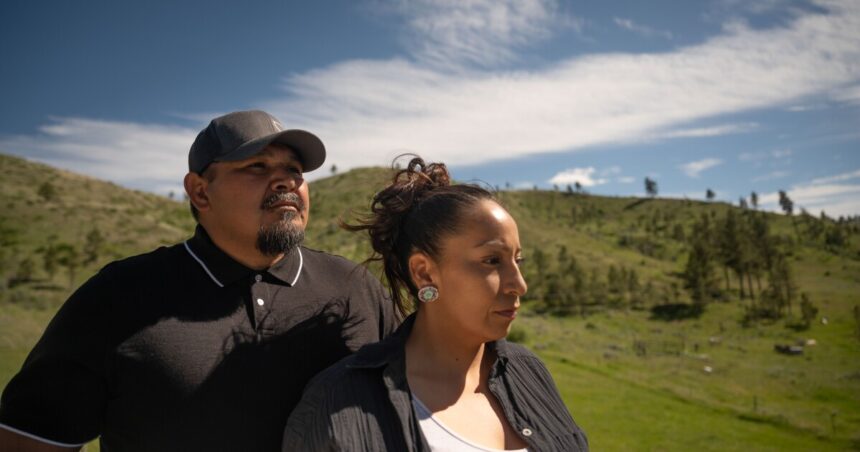Crystal Hiwalker pondered whether her heart and lungs would have continued to function if the ambulance crew could have administered a transfusion as she lost blood during a stormy, 100-mile journey.
Due to a snowstorm in 2019, it took 2.5 hours to travel from her small town of Lame Deer to the advanced trauma center in Billings.
Doctors at the Billings Clinic hospital successfully revived Hiwalker and stopped the bleeding from her ruptured ectopic pregnancy. They were amazed by her survival, especially since her heart had stopped and she had lost nearly all her blood, yet she recovered without brain damage.
The Montana State Trauma Care Committee later realized that the ambulance carrying Hiwalker had passed close to two hospitals that had blood in stock. This led the committee to create the Montana Interfacility Blood Network, the first program of its kind in the U.S., which allows ambulance crews to collect blood from hospitals and transfuse it to patients en route to specialized care, according to KFF Health News.
Gordon Riha, a trauma surgeon at the Billings Clinic trauma center where Hiwalker received treatment, described the concept as a “blood handoff” strategy, akin to a drive-thru, which can provide timely blood transfusions to prevent death or brain injury.
The network targets rural patients who face higher rates of traumatic injuries and mortality, as stated by Alyssa Johnson, Montana’s trauma system manager.
Since its launch in 2022, the program has assisted at least three patients, with hopes for more utilization in the future.
Hiwalker expressed her enthusiasm for the program, believing it could save many lives in her rural community, where incidents like car crashes, gunshot wounds, and stabbings often lead to fatal bleeding.
The Montana trauma committee initiated discussions on the blood network shortly after Hiwalker’s incident, creating a map of 48 facilities with blood banks and establishing guidelines for communication, packaging, transport, documentation, and billing related to blood exchanges.
Given the emergency nature of the network, only type O red blood cells, safe for most patients, are used without testing blood types. Costs for the blood transfusions, billed to patients’ insurance by the receiving hospital, vary based on the amount needed.
Jessica Plance for KFF Health News)
Rural hospitals in Montana, which may have limited blood supplies, have benefited from the network. In one case, an ambulance medics fetched more blood from a hospital midway through an 80-mile drive to a trauma hospital for a patient with severe bleeding.
Although medical helicopters or planes equipped for transfusions are ideal for rural patients with critical bleeding, adverse weather conditions can hinder air transport, necessitating lengthy ambulance trips, as seen in Hiwalker’s situation.
The blood handoff process might involve stops at additional hospitals, or police officers delivering blood at highway exits when necessary, as Johnson pointed out.
As other regions and states, including those with rural areas, implement blood transfusions in ambulances and aircraft, researchers are exploring new blood products like frozen and freeze-dried options for easier storage and extended shelf life.
Johnson emphasized that the Montana Interfacility Blood Network, uniquely designed for rural patients, has garnered attention from other states with vast rural areas, such as Oregon.
Hiwalker believes that receiving a blood transfusion in the ambulance could have averted her harrowing experience and the distress her husband endured. She sees her ordeal as a catalyst for an innovative program that is now helping others.
KFF Health News is a national newsroom dedicated to producing comprehensive health journalism and is a key program at KFF—an independent source of health policy research, polling, and journalism. Learn more about KFF.





